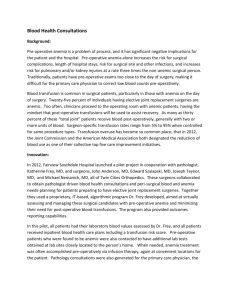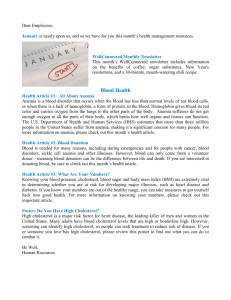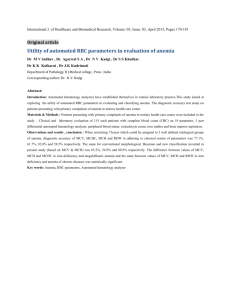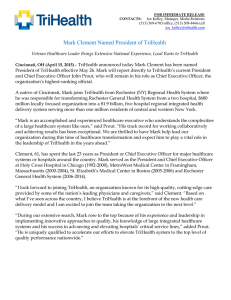Preoperative Anemia Management In Elective Joint Replacement
advertisement
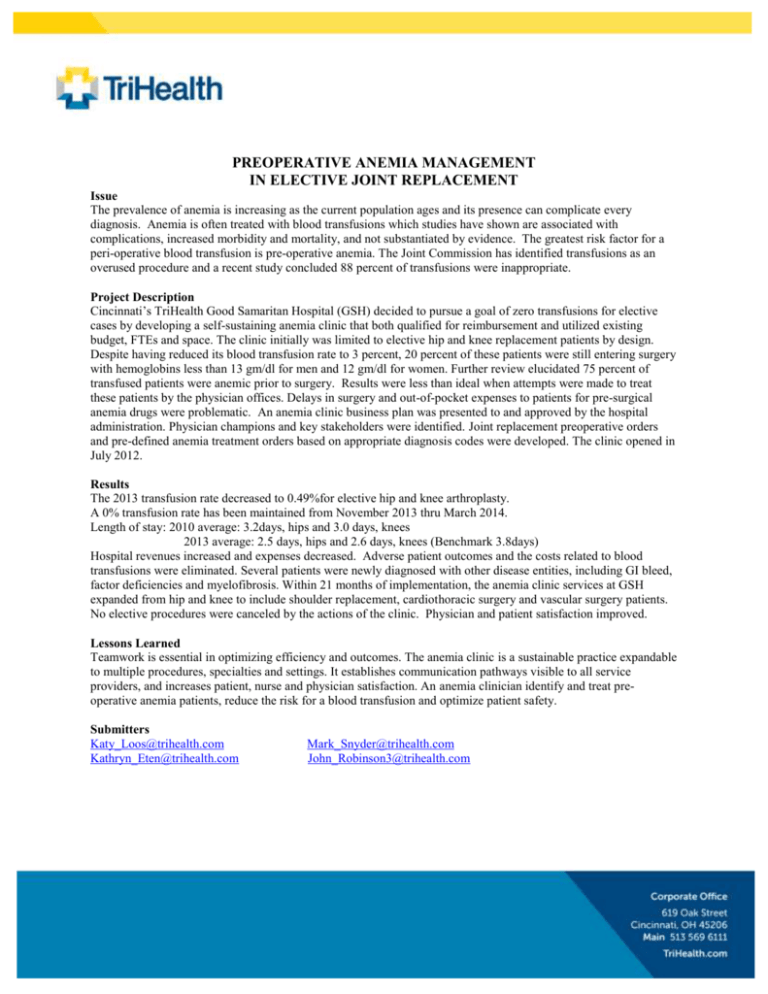
PREOPERATIVE ANEMIA MANAGEMENT IN ELECTIVE JOINT REPLACEMENT Issue The prevalence of anemia is increasing as the current population ages and its presence can complicate every diagnosis. Anemia is often treated with blood transfusions which studies have shown are associated with complications, increased morbidity and mortality, and not substantiated by evidence. The greatest risk factor for a peri-operative blood transfusion is pre-operative anemia. The Joint Commission has identified transfusions as an overused procedure and a recent study concluded 88 percent of transfusions were inappropriate. Project Description Cincinnati’s TriHealth Good Samaritan Hospital (GSH) decided to pursue a goal of zero transfusions for elective cases by developing a self-sustaining anemia clinic that both qualified for reimbursement and utilized existing budget, FTEs and space. The clinic initially was limited to elective hip and knee replacement patients by design. Despite having reduced its blood transfusion rate to 3 percent, 20 percent of these patients were still entering surgery with hemoglobins less than 13 gm/dl for men and 12 gm/dl for women. Further review elucidated 75 percent of transfused patients were anemic prior to surgery. Results were less than ideal when attempts were made to treat these patients by the physician offices. Delays in surgery and out-of-pocket expenses to patients for pre-surgical anemia drugs were problematic. An anemia clinic business plan was presented to and approved by the hospital administration. Physician champions and key stakeholders were identified. Joint replacement preoperative orders and pre-defined anemia treatment orders based on appropriate diagnosis codes were developed. The clinic opened in July 2012. Results The 2013 transfusion rate decreased to 0.49%for elective hip and knee arthroplasty. A 0% transfusion rate has been maintained from November 2013 thru March 2014. Length of stay: 2010 average: 3.2days, hips and 3.0 days, knees 2013 average: 2.5 days, hips and 2.6 days, knees (Benchmark 3.8days) Hospital revenues increased and expenses decreased. Adverse patient outcomes and the costs related to blood transfusions were eliminated. Several patients were newly diagnosed with other disease entities, including GI bleed, factor deficiencies and myelofibrosis. Within 21 months of implementation, the anemia clinic services at GSH expanded from hip and knee to include shoulder replacement, cardiothoracic surgery and vascular surgery patients. No elective procedures were canceled by the actions of the clinic. Physician and patient satisfaction improved. Lessons Learned Teamwork is essential in optimizing efficiency and outcomes. The anemia clinic is a sustainable practice expandable to multiple procedures, specialties and settings. It establishes communication pathways visible to all service providers, and increases patient, nurse and physician satisfaction. An anemia clinician identify and treat preoperative anemia patients, reduce the risk for a blood transfusion and optimize patient safety. Submitters Katy_Loos@trihealth.com Kathryn_Eten@trihealth.com Mark_Snyder@trihealth.com John_Robinson3@trihealth.com

